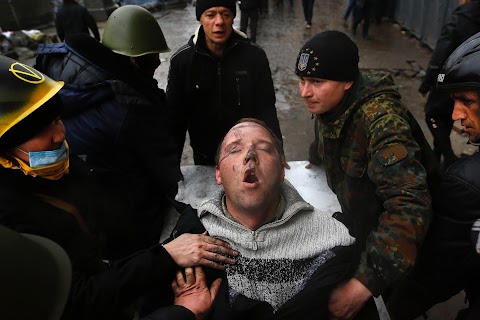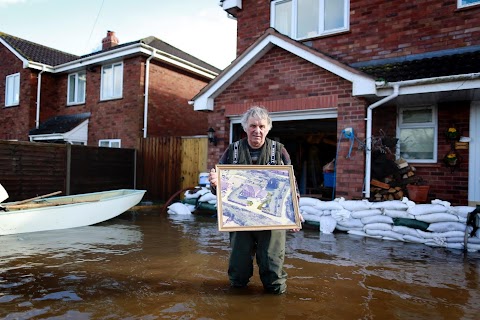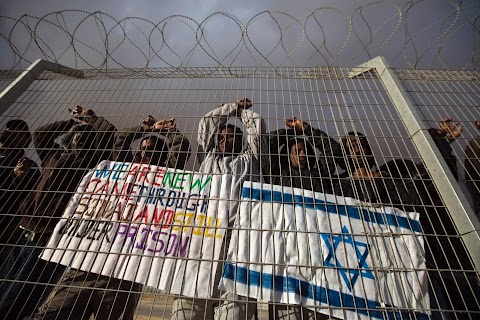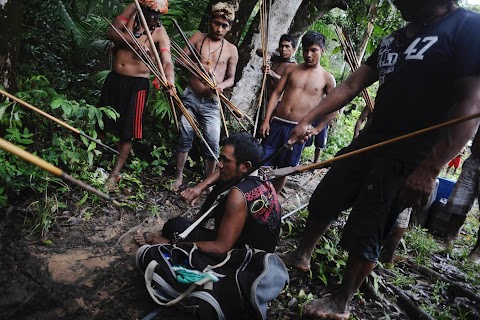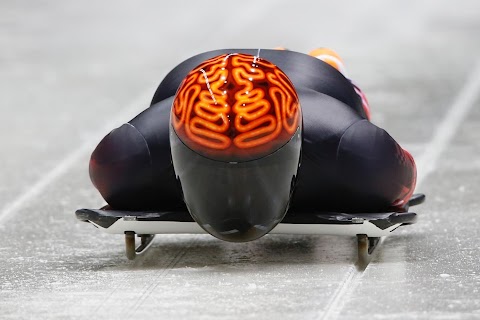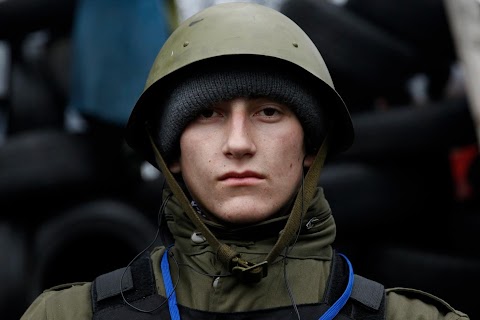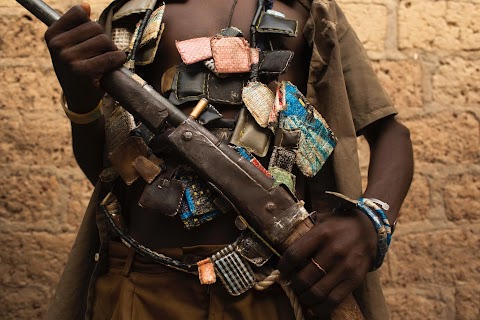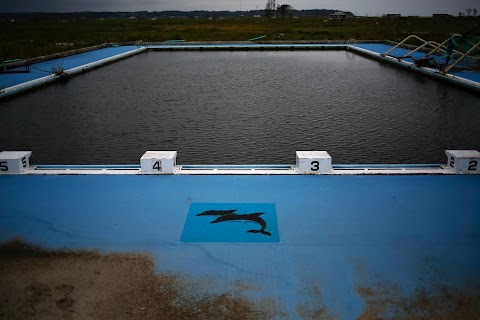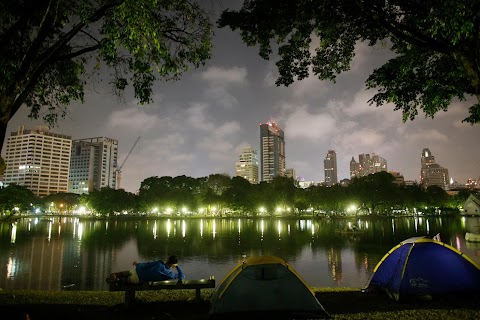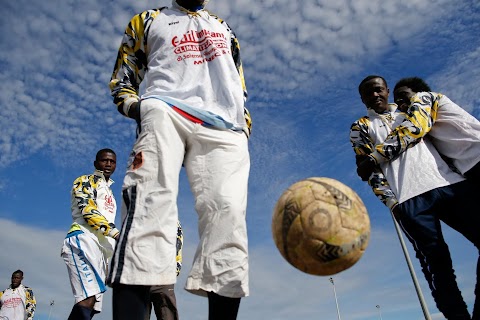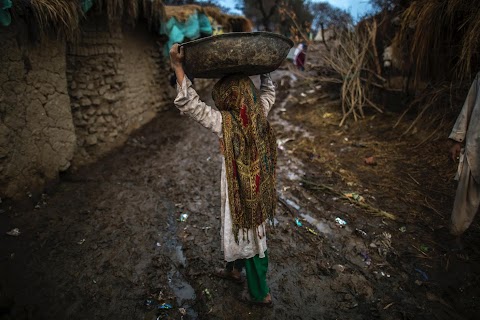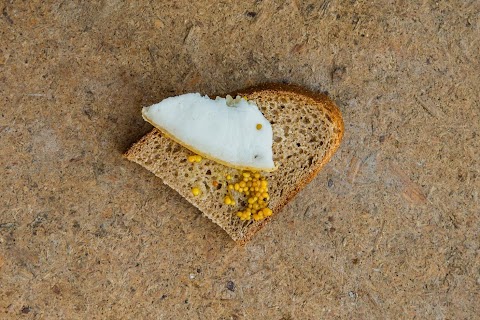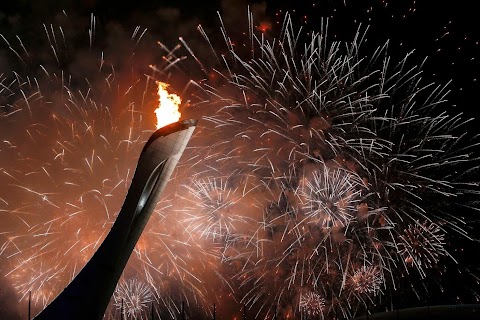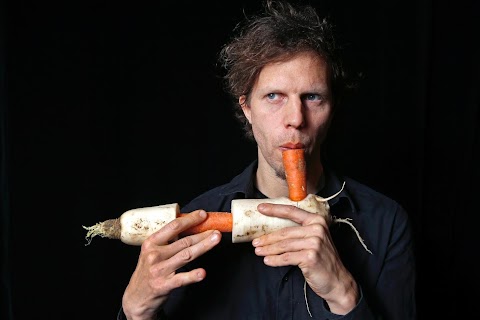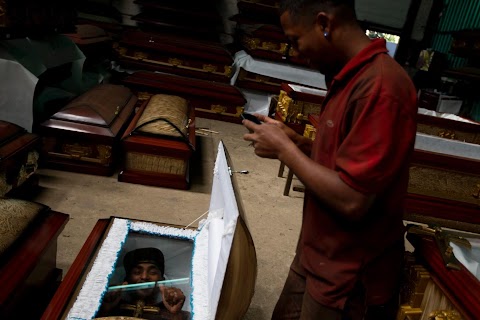
The business of death
 Carlos Garcia Rawlins
Carlos Garcia Rawlins
A strange image: a smiling employee at a coffin factory in Caracas takes a photograph of a colleague lying inside one of the caskets.
If workers like them have become somewhat desensitised to death, it perhaps reflects the sheer volume of violence around them. Venezuela has one of the world’s highest levels of homicides and Caracas’s murder rate is over 100 per 100,000 residents, according to a monitoring group.

Both Venezuela’s official national rate of 39 deaths per 100,000 people in 2013 and a tally of double that from monitoring group the Venezuelan Violence Observatory (OVV) make Venezuela an international leader in homicides, vying with gang-plagued nations such as Honduras and El Salvador.
By comparison, the United States' current rate is about 4.7 deaths per 100,000.
Undertakers like Jhonny Aguilar (pictured above, right) have lots to do.
"Mondays are the busiest. They kill more people at the weekends," said Aguilar, describing his work matter-of-factly as he picked up bodies from a morgue to wash and dress.

A decades-old problem in Venezuela, armed robberies, kidnappings and murders climbed during the 1999-2013 rule of President Hugo Chavez, despite his anti-poverty programs.
Critics blame a corrupt and broken judicial system, from the local police station up to the Supreme Court. "Chavistas" point to the influence of "capitalist evils" such as drug trafficking and violent U.S. TV shows.
Whatever the causes, the deaths have fuelled a plethora of businesses purveying to death, from casket manufacturers to tomb-chisellers, flower-sellers, grave diggers and permit-handlers.

In the midst of this violence, reactions to death can be unusual. Here, relatives of a shooting victim smoke marijuana and cry over his coffin, after forcing the hearse on a detour to their neighbourhood as a tribute to the diseased before the burial.
Gravediggers in Caracas’ Southern Cemetery tell of attacks on mourners by gunmen from the surrounding slums, drug-fuelled parties at tombs, and night-time desecrations of graves to steal bones for animistic rituals.

Despite ever-growing demand for their services, the funeral businesses in Caracas face many problems.
They complain of a lack of respect for the dead, with many mourners drinking, partying and joking around coffins. Undertakers say fights, and even some fatal shootings, have occurred on their premises during wakes.
Then there's Venezuela's tough economic realities. The government wants to cap prices for funeral services and shortages of products from marble to screws are widespread.
"Venezuela was a paradise when I arrived," says Laudelino Morales (pictured above), a 76-year-old Spanish immigrant who has spent half a century chiselling tomb-stones, in his dust-covered workshop round the corner from the Southern Cemetery.
"Now it's a No. 1 disaster."
Slideshow

Police officers inspect the body of a dead shooting victim on a street in Caracas.

A man kisses his relative, who died in a shooting, at a morgue in the city.

Embalmer’s instruments are seen on a tray at an undertaker's morgue.

Atilio Gonzalez, who has worked as a priest at the Southern Cemetery in Caracas for the last 24 years, talks with the relative of a crime victim before the victim’s burial.

Ponciano Capote makes a flower arrangement at an undertaker’s flower shop.

A worker digs a grave in the East Cemetery in Caracas.

Relatives of a crime victim carry his coffin during his funeral ceremony.

Relatives of a crime victim cry over his coffin and smoke a marijuana joint after forcing the hearse to make a detour to their neighbourhood.

Relatives of the dead man follow the hearse on motorcycles after forcing it to drive to their neighbourhood.

Priest Atilio Gonzalez says a prayer during a burial ceremony at the Southern Cemetery.

Relatives of a shooting victim cry over his coffin during his funeral ceremony.

Police officers fire their guns in tribute during the burial of a comrade who was shot dead.

A worker closes the oven during a man’s cremation.

A worker grinds the remains of a cremated body.

A worker carries the remains of a person who was cremated.

A picture of a crime victim is seen at a tombstone factory near the Southern Cemetery in Caracas.
"We went past alcoholics, between mausoleums destroyed by vandals, over scruffy plants, garbage and desecrated tombs from which bones had been stolen."
As a photographer I’ve been present at many funerals and I’ve often found myself, in one way or another, surrounded by death and all that it entails.
One of the more gruesome things that I have witnessed is the sight of a victim of violence being embalmed.
The pungent odours of formaldehyde and decomposition, and the way that they make your eyes itch, are nothing compared to the moment when the embalmer methodically removes the seal that closed the head-to-belly incision following the autopsy.
He then places the organs inside a bag, stuffs the abdomen with newspaper, and sews it up again before placing it in a coffin. This was the process I saw performed on a person who died several days earlier from multiple gunshot wounds.
When I begin a new photo story, it fascinates me to think about what new places it will take me to, what new experiences I will live, what new people I will meet, and to what new limits I will be pushed.
In this case, the story brought me much closer to the problem of everyday violence in Venezuela. But my project also had a different focus – I looked at the industries that are thriving due to the rise in violent deaths over the last few years.
One thing I can’t get out of my head is that the assumption that most killings happen in conflict zones is totally wrong. According to the World Health Organisation, the number of violent deaths caused by homicides is far greater than the numbers directly caused by war.
As Venezuelans we are accustomed to all the bloody statistics of “common violence”. The Venezuelan Violence Observatory, a monitoring group, says that the homicide rate has risen from around 19 per 100,000 in 1998 to around 79 last year, with no arrests in 90 percent of cases. Official statistics are lower, but even they show the murder rate doubling since 1999.
It’s become the norm for us to be close to the top of the list of the world’s most violent countries. And those statistics exist without Venezuela having a reputation for drug gangs or cartels, as is the case with Mexico and Colombia.
Even if they are not directly involved as victims or perpetrators, many people are connected to this violence though their everyday jobs. One such person is the priest Atilio Gonzalez, who told me about some of his experiences after 24 years of working at the city’s public Southern Cemetery. “I’ve lived here and seen everything,” he said.
After lunch we walked through the graveyard. We went past alcoholics, between mausoleums destroyed by vandals, over scruffy plants, garbage and desecrated tombs from which bones had been stolen, and on to a burial site where he had been asked to perform the religious ceremony.
Another person I met whose job relates to death was a 76-year-old called Laudelino. Full of energy, Laudelino works in tattered clothes that are completely covered by white dust from the tombstones that he carves. With chisel in hand, he engraved a stone for a 20-year-old man as he told me how more dead people have passed through his hands than through anyone else’s.
It was not easy to get access to the subjects of this story. It took me over a year of meetings and conversations to gain the trust of individuals and negotiate with or simply accept the response of people who said no.
Probably the most difficult thing was finding families who would allow me to photograph during the wakes and funerals of their relatives who had been killed by violence. Some of these were ceremonies with many mourners paying tribute to the deceased.
I was at one such wake when suddenly everything turned into a whirlwind as I was pushed onto the back of the motorcycle of one of the victim’s buddies, a gang leader who had spent the entire night drinking. As soon as we left the mortuary he drove the bike up to the window of the hearse and forced it to drive to a low-income neighbourhood called 23 de Enero (23rd of January).
That was just the beginning of an afternoon filled with tense moments during which many bikers blocked the streets ahead to allow the funeral procession to pass. From time to time they would also stop the hearse and do bike acrobatics around it in tribute to their friend.
The cars blasted music loud enough to stop the mourners’ tears. When the procession reached the victim’s home, they lowered the coffin and carried it to a marijuana patch in the backyard, and opened the lid to continue their tribute as many cried.
The most shocking thing for me was perhaps not the experience itself – it was hearing and understanding that they knew who had killed the victim, and that they were planning revenge. It was the perfect formula for an infinite spiral of violence.
Covering this story, I had the feeling that life on Venezuela’s streets is held cheaper every day, but the business of death is increasingly profitable. And it will continue to be as long as the so-called “common violence” becomes ever more common.
